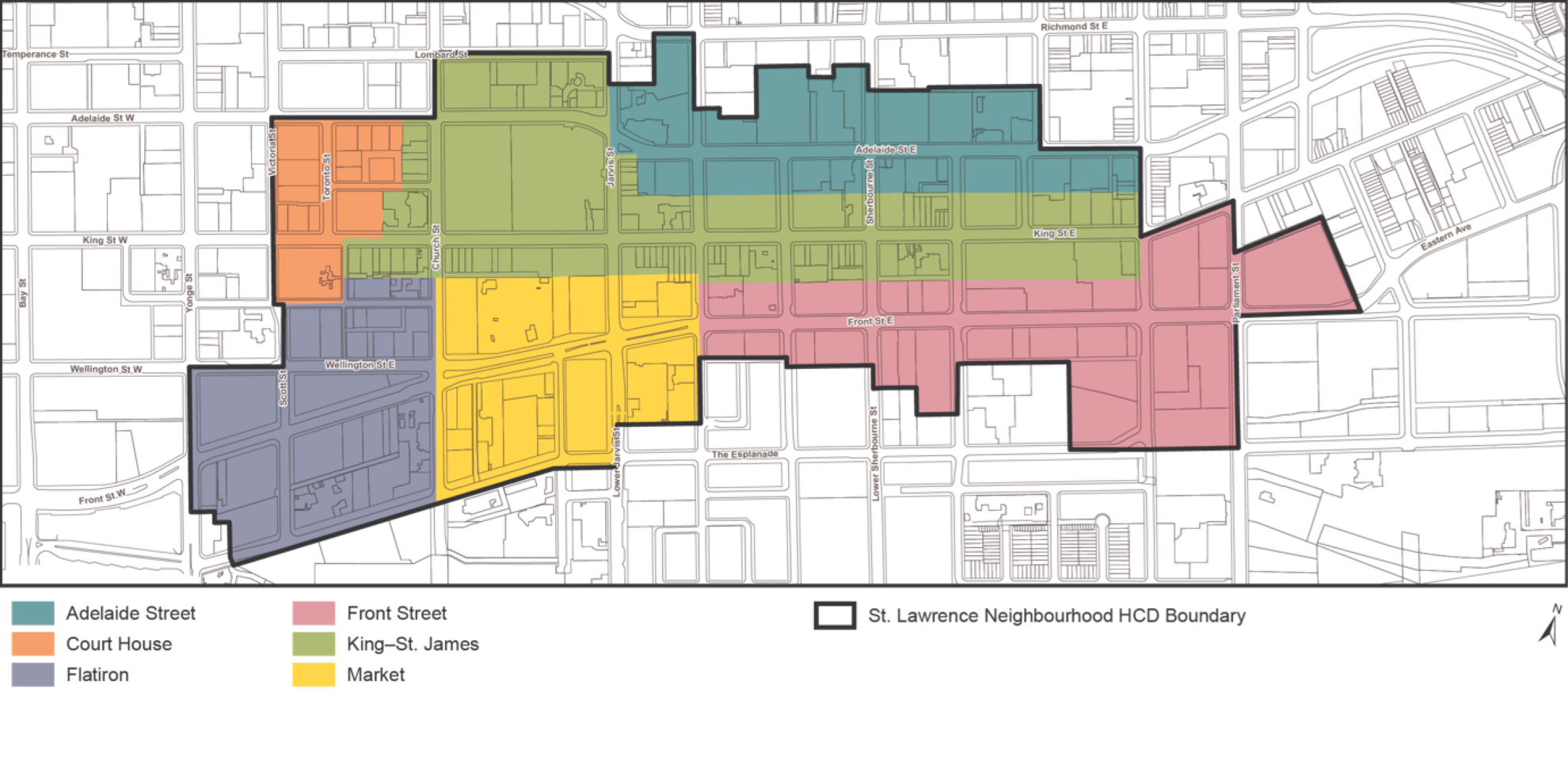By Andre Bermon and Rosemary Frei
In just a few months’ time the broad-strokes future of the historic buildings in the St. Lawrence area will be decided.
That’s because, according to a source who spoke to the bridge off the record, in the early summer the Local Planning Appeal Tribunal (LPAT) will release its decision to either loosen the rules in the area’s Historical Conservation District (HCD) Plan – which came into effect in November 2015 but was immediately appealed and, as a result, effectively suspended – or allow the plan to be implemented without any modifications.
This will set a precedent for other HCD Plans in Toronto and elsewhere in Ontario.
The St. Lawrence Neighbourhood HCD is akin to Montreal’s Old City. It contains dozens of intact historic buildings, the oldest of which were constructed in the 1820s. The district includes the 10 blocks of the original Town of York and many important landmarks such as the site of the original Ontario provincial parliament buildings, the south building of the St. Lawrence Market, St. James Cathedral and the Flatiron Building. It also has been the epicentre of many of Toronto’s key civic, cultural, community and social events throughout more than two centuries.
The HCD stemmed from a 2005 official recognition of the area’s historic importance and culminated in more than three years of intense and complex study, public consultation and writing. The resultant rules in the HCD are designed to ensure that the area’s unique character is conserved permanently.
The historic heft of the area, combined with the sheer size of the district – covers more than 25 blocks of some of the most valuable real estate in the city, from Yonge and Wellington on its west end to Front and Jarvis on the south to King and Berkeley on the east — created strong camps on both sides of the appeal-process tussle.
That in turn is why it’s taken more than four years to grind through all the procedural steps. The final appeal hearing took place in November 2019 and lasted more than two weeks.
Toronto city council gave the 249-page St. Lawrence Neighbourhood HCD Plan the go-ahead in November 2015. Its goal is to curtail the rapid diminishment by immense development pressure of the downtown east’s special character. For example, it puts strict parameters around alterations to and demolitions of historic buildings. It also significantly limits density and height of additions to historic buildings.
A consortium of developers and investment firms with vast real-estate portfolios, including First Gulf and Larco Investments Ltd., immediately appealed the implementation of the HCD Plan to the Ontario Municipal Board, which in 2017 became the LPAT. If the appeal is successful, the LPAT will loosen the HCD Plan’s restrictions on current and future development proposals.
“We had lots of [items] in the [St. Lawrence HCD] proposal that we had issues with,” Hugh Clark, Executive Vice President, Development, at Allied Properties Real Estate Investment Trust – a company with many properties in the St. Lawrence neighbourhood and elsewhere in the centre of Toronto, and one of the 14 corporations appealing the HCD Plan — told the bridge. “… Our expectation is that our concerns will be addressed [by the LPAT’s decision].”
The City of Toronto’s planning department and their legal team are opposing the appeal.
“An HCD will provide a much-needed framework to help conserve the heritage character of this important neighbourhood for present and future generations,” Tamara Anson-Cartwright, city planning’s Program Manager, Policy & Research of Heritage Planning, wrote in a formal response to the appeal.
“You never know what they [the LPAT] are going to come up with,” David Crawford, Chair of the St. Lawrence Neighbourhood Association’s Heritage Committee, which is opposing the appeal, said in an interview with the bridge. “Instead of the opinion of a group of professionals in both the city and in the neighbourhood, you have one person [the single LPAT adjucicator who will render the tribunal’s decision] who is going to say, ‘This is what’s going to be.’”
Fae Elgin, president of the Architecture Conservatory of Ontario, commented that this will be a precedent-setting decision because so much is at stake.
“People think that [heritage’s] only purpose is to preserve our history.… In fact, the presence of these buildings makes for a more livable environment,” Elgin told the bridge. “… [O]lder heritage buildings are more human-scaled.”
According to city planning staff there are three other HCDs under appeal to the LPAT. These include the neighbouring Garden District HCD, the appeal of which is scheduled to start in August 2020.
“We are certainly watching the various appeals and appeal processes that are going to be opened up in the future,” Elgin told the bridge. “It’s a different perspective to let a tribunal decide what is best for a neighbourhood [rather] than letting the neighbourhood itself [decide].”




